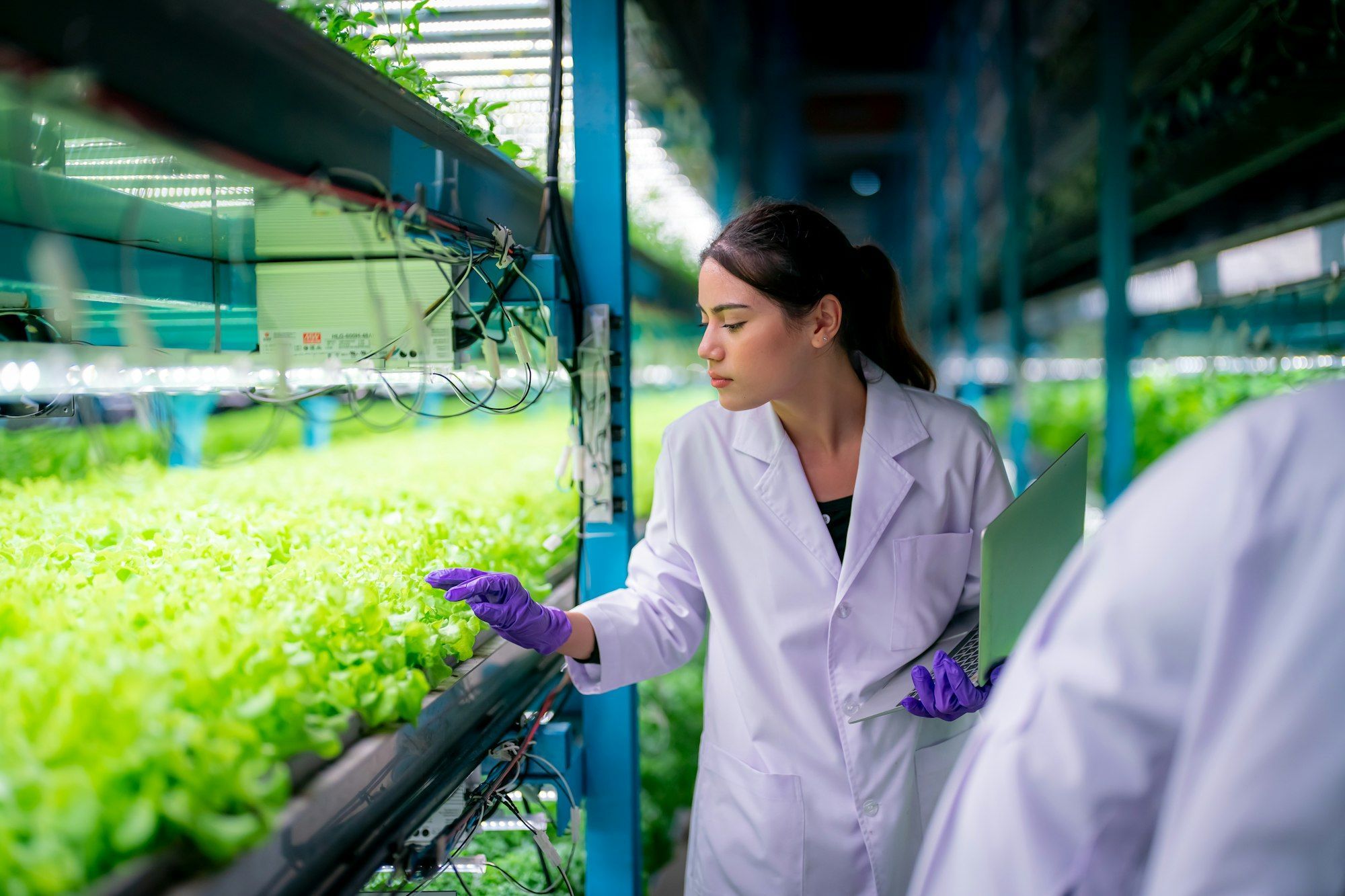In a rapidly changing world, the agriculture landscape is evolving to meet the future’s challenges. One of the most revolutionary methods making waves in the sector is vertical farming. As climate change and urbanization continue to exert pressure on traditional farming systems, UK agricultural businesses must consider innovative solutions like vertical farms. This article will explore the key considerations for UK agricultural businesses in adopting vertical farming, shedding light on the benefits, challenges, and essential steps for successful integration.
The Essentials of Vertical Farming for the UK Agriculture Sector
Adopting vertical farming can be a transformative step for agricultural businesses in the UK. This agri tech innovation involves growing crops in stacked layers, often in controlled indoor environments. The system harnesses technology to enhance food production, support food security, and create sustainable farming practices. But what should UK agricultural businesses consider first?
Topic to read : Conversational analysis: unlocking customer insights and agent performance
Understanding the Basics of Vertical Farming
Vertical farming entails cultivating plants in vertically stacked layers using controlled environment agriculture (CEA) technologies. This indoor farming method relies on artificial light, controlled temperature, and optimized water and nutrient delivery systems. The potential for year-round production, efficient land use, and reduced energy consumption makes vertical farming an attractive option.
However, transitioning from traditional to vertical farming requires a deep understanding of how these systems work. Businesses must evaluate the financial investment, the type of crops suitable for vertical growth, and the technological requirements. Collaborating with agri-tech firms and utilizing resources like Google Scholar can provide valuable insights and data to guide this transition.
Also to read : How to Implement Circular Economy Principles in UK Electronics Manufacturing?
Assessing the Economic Viability
One of the pivotal considerations is the economic feasibility of vertical farming. Initial setup costs can be high due to the need for specialized equipment, technology, and infrastructure. UK agricultural enterprises must calculate the return on investment (ROI) by considering factors like production capacity, market demand, and operational costs.
A detailed financial plan should account for energy expenses, labor, and maintenance. Although vertical farms can reduce water usage and increase yield per square meter, the cost of electricity for lighting and climate control can be significant. Exploring renewable energy sources and implementing energy-efficient technologies can mitigate these costs and enhance economic viability.
Technological and Environmental Considerations
The successful implementation of vertical farming in the UK hinges on leveraging technology effectively and addressing environmental impacts. These aspects are crucial for creating a sustainable and resilient food system.
Harnessing Cutting-Edge Technology
Advanced technologies are the backbone of indoor vertical farming. Automated systems for planting, monitoring, and harvesting crops can significantly improve efficiency and consistency. The integration of IoT (Internet of Things) devices and data analytics enables precise control over environmental conditions, optimizing plant growth and resource use.
Artificial intelligence (AI) and machine learning algorithms can predict and manage potential issues, ensuring consistent food production. For instance, AI can analyze data on plant health, growth patterns, and environmental parameters, allowing for timely interventions and adjustments.
Environmental Impact and Sustainability
While vertical farming offers numerous environmental benefits, such as reduced land use and lower water consumption, it also poses challenges. The reliance on artificial lighting and climate control systems can lead to substantial energy consumption. UK businesses must explore sustainable practices, such as using LED lighting, recycling water, and integrating renewable energy sources like solar or wind power.
Additionally, the location of vertical farms plays a crucial role in minimizing environmental footprints. Urban agriculture, where farms are situated close to the consumer base, can reduce transportation emissions and contribute to food security in densely populated areas. By adopting sustainable practices, UK agricultural businesses can enhance the environmental resilience of their farming systems.
Market Dynamics and Consumer Preferences
Understanding market dynamics and consumer preferences is vital for the success of vertical farming ventures. UK agricultural businesses need to align their produce with market demands and build consumer trust.
Meeting Market Demands
Vertical farming allows for the production of a wide range of crops, from leafy greens to herbs and even strawberries. However, not all crops are equally suited to vertical farming. Businesses must research market trends and consumer preferences to identify high-demand crops that can be efficiently grown indoors.
Collaborating with retailers and distributors can provide insights into market needs and help establish reliable supply chains. Additionally, branding and marketing strategies should highlight the benefits of vertical farming, such as freshness, sustainability, and reduced pesticide use, to appeal to environmentally conscious consumers.
Building Consumer Trust and Awareness
Consumer perception plays a significant role in the success of vertical farms. Educating the public about the advantages of vertical farming and the quality of the produce is essential. Transparency in farming practices, such as showcasing the technology used and the sustainability measures implemented, can build consumer trust.
Engaging in community outreach and participating in local food initiatives can further enhance consumer awareness and acceptance. By positioning vertical farming as a solution to modern agricultural challenges, UK businesses can foster a loyal customer base and drive market growth.
Overcoming Challenges and Ensuring Long-Term Success
While vertical farming presents numerous opportunities, it also comes with its set of challenges. Addressing these challenges effectively can ensure the long-term success and sustainability of vertical farming ventures in the UK.
Addressing Technical and Operational Challenges
The technical complexity of vertical farming systems requires a skilled workforce capable of managing and maintaining advanced technologies. Continuous training and education for employees are crucial. Additionally, businesses must be prepared to troubleshoot and resolve technical issues promptly to avoid disruptions in food production.
Operational challenges, such as pest management and disease prevention, also require innovative solutions. Utilizing biocontrol methods and fostering a resilient system can mitigate these risks. Regular monitoring and data-driven decision-making are essential for maintaining optimal growing conditions and ensuring consistent crop yield.
Ensuring Regulatory Compliance and Support
Navigating the regulatory landscape is another critical consideration. UK agricultural businesses must adhere to food safety standards, land use regulations, and environmental policies. Engaging with regulatory bodies and industry associations can provide guidance and support in meeting these requirements.
Seeking financial support and incentives from government programs and grants can also alleviate some of the initial investment burdens. Collaborating with research institutions and participating in industry forums can keep businesses updated on the latest developments and best practices in vertical farming.
In conclusion, vertical farming holds significant promise for UK agricultural businesses seeking to innovate and adapt to modern challenges. By understanding the basics, assessing economic viability, leveraging technology, addressing environmental considerations, and aligning with market demands, businesses can successfully integrate vertical farming into their operations.
While the journey may involve overcoming technical, operational, and regulatory challenges, the potential benefits in terms of sustainability, food security, and system resilience are considerable. As the world moves towards more sustainable and efficient farming systems, vertical farming stands out as a viable and forward-thinking option. For UK agricultural businesses, adopting vertical farming could indeed be a key step towards a more resilient and prosperous future in food production.






